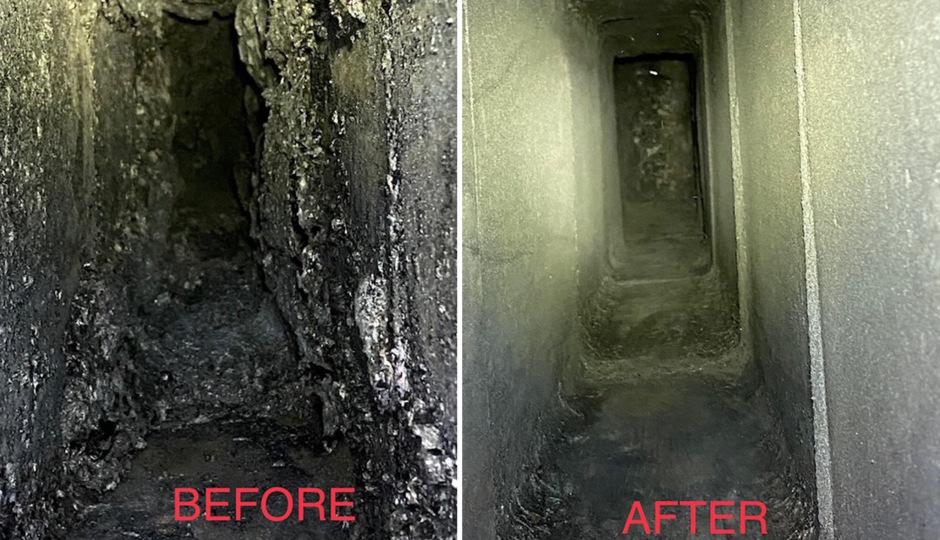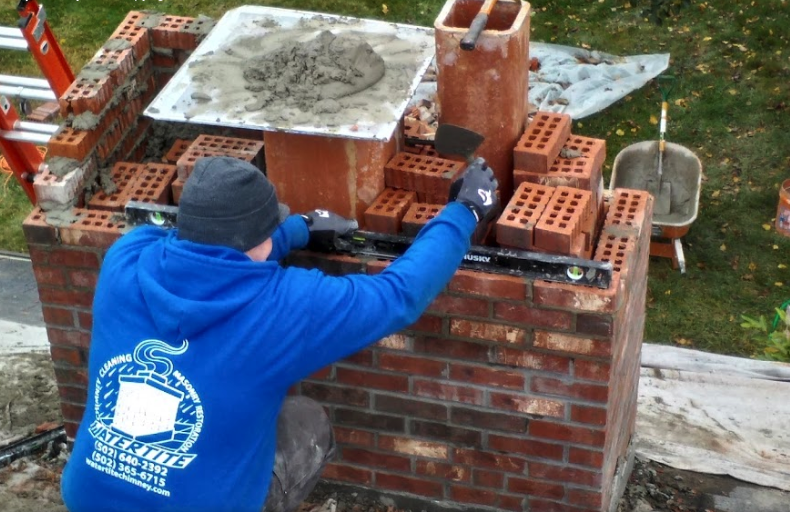Specialist Tips for Effective Smokeshaft Maintenance You Need to Know
Smokeshafts serve as critical components in several homes, giving warmth and convenience. From the significance of regular inspections to safe operational practices, a thorough technique to chimney maintenance is important.
Importance of Normal Evaluations
Regular inspections of smokeshafts are vital for guaranteeing their safety and capability. Chimneys play an essential duty in venting out damaging gases and keeping appropriate airflow in a home. Gradually, creosote accumulation, debris, and architectural damage can happen within the chimney, posing significant risks such as smokeshaft fires or carbon monoxide leakages.
During a smokeshaft inspection, educated professionals assess the condition of the chimney, searching for any type of signs of damage, clogs, or damage. They also check the stability of the flue, smokeshaft lining, and smokeshaft cap to guarantee every little thing remains in correct functioning order. By identifying and attending to concerns beforehand, expensive repairs or potential dangers can be stayed clear of.
Regular inspections not only assist in keeping the safety and security of the chimney yet also add to its general effectiveness. A tidy and properly maintained chimney runs more efficiently, making sure appropriate ventilation and reducing the danger of indoor air pollution. As a result, scheduling annual chimney evaluations is a positive measure that house owners can take to safeguard their property and loved ones.
Cleaning Techniques and Frequency
Maintaining the safety and efficiency of a chimney involves not just routine evaluations but also applying suitable cleaning techniques and determining the optimum frequency for cleansing. Smokeshafts ought to be cleaned by a specialist chimney sweeper a minimum of yearly, also if they are not frequently used. However, if the smokeshaft is used regularly, specifically with wood-burning cooktops or fire places, it might need more constant cleanings to stop the build-up of creosote, a highly combustible compound that can result in chimney fires.
The cleaning procedure usually entails eliminating creosote, residue, and debris from the smokeshaft flue, smoke chamber, and firebox. Professional chimney sweeper use specialized brushes, tools, and vacuum cleaners to ensure thorough cleansing without developing a mess in the home. Furthermore, they check the smokeshaft's framework for any kind of signs of damage or wear that may call for repair services. Homeowners must never neglect chimney cleansing, as it is crucial for maintaining a risk-free and functional chimney system - Chimney Maintenance San Jose. Routine cleansings not only reduce the risk of chimney fires yet also improve the chimney's overall performance and durability.
Resolving Chimney Leaks

When resolving smokeshaft leakages, extensive evaluation and timely fixings are important to avoid water damages and maintain the structural integrity of the chimney. Leaks in a smokeshaft can cause significant concerns such as mold development, deterioration of the smokeshaft framework, and even potential fire hazards. To efficiently address chimney leaks, begin by inspecting the chimney cap, crown, flashing, and stonework for any type of indications of damage or wear. Chimney caps should be securely in position to avoid water from going into, while the crown and flashing ought to be intact and properly secured. Any kind of splits official website or gaps in the masonry need to be repaired quickly to stop water seepage. In addition, consider waterproofing the smokeshaft to supply an extra layer of security against dampness. Normal upkeep and examinations can aid find and attend to chimney leakages early, conserving you from pricey repair services and guaranteeing the safety and durability of your smokeshaft.
Recognizing Creosote Accumulation
To understand the potential hazards of creosote build-up in smokeshafts, it is important to recognize its development process and effect on chimney efficiency. Creosote is a black or brownish tar-like compound that collects inside smokeshaft systems when timber or nonrenewable fuel sources are melted. As smoke increases through the smokeshaft, it cools down and condenses, resulting in the development of creosote, which abides by the smokeshaft walls.

Routine smokeshaft evaluations and cleanings by a professional chimney sweeper are essential in preventing creosote accumulation and making certain the secure procedure of your smokeshaft system.
Safe Operation Practices
Implementing proper safety methods is crucial for the protected and effective procedure of smokeshaft systems. When utilizing a fireplace or wood-burning range, it is essential to follow details security methods to avoid potential threats. First of all, constantly make certain that the chimney is expertly inspected and cleansed on a regular basis to get rid of any kind of creosote build-up, which can result in smokeshaft fires. Furthermore, use a tough screen or glass door before the fire place to avoid embers or stimulates from leaving and creating a fire in your house. It is also vital to never overload the fire place with excessive quantities of wood, as this can cause overheating and possible architectural damage.
Additionally, see to it to only shed experienced timber in your fire place, as green or wet timber can create more creosote and cause hazardous smokeshaft clogs. Never ever leave a fire ignored and constantly make sure the fire is completely extinguished before going to bed or leaving the house. By following these secure operation methods, you can take pleasure in a relaxing and warm fire while making sure the safety and security of your home and enjoyed ones.
Final Thought
In conclusion, keeping image source your chimney is essential for guaranteeing its safety and performance. Normal evaluations, correct cleaning strategies, dealing with leaks, handling creosote build-up, and complying with secure operation methods are key elements of smokeshaft maintenance.
Over time, creosote accumulation, debris, and structural damage can take place within the chimney, presenting serious risks such as smokeshaft fires or carbon monoxide leakages.
If the great post to read chimney is made use of routinely, particularly with wood-burning ovens or fire places, it may need more constant cleansings to stop the buildup of creosote, a very combustible compound that can lead to smokeshaft fires. (Chimney Maintenance San Jose)
To comprehend the prospective hazards of creosote build-up in chimneys, it is vital to identify its formation procedure and effect on smokeshaft efficiency. As smoke rises with the smokeshaft, it cools and condenses, leading to the development of creosote, which adheres to the smokeshaft walls.
Always ensure that the smokeshaft is professionally evaluated and cleansed regularly to get rid of any kind of creosote accumulation, which can lead to chimney fires.